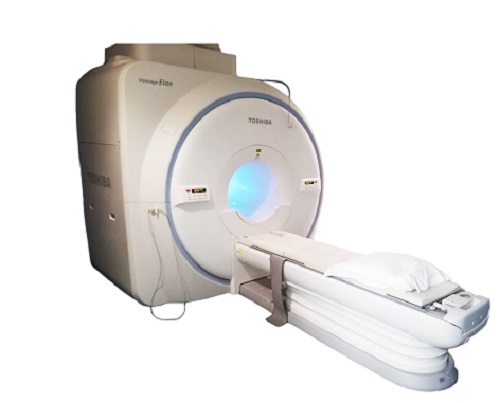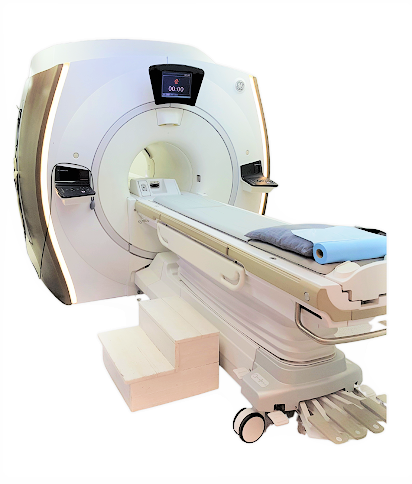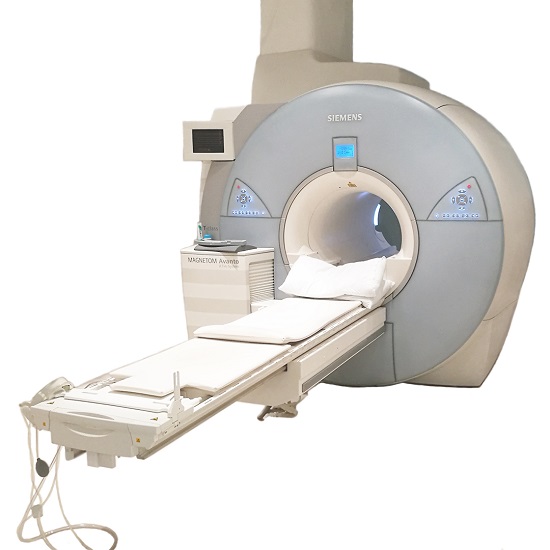Liquid Helium in MRI Machines – Price, Use, and More
Would you like to increase your knowledge of liquid helium in MRI machines and its usage, because you already have an MRI or want to buy one?
Then welcome to our page.
As you might know, Magnetic Resonance Imaging (MRI) is one of the game-changing technologies in the medical community. MRI allows medical professionals to collect important information about their patient’s condition without exposing them to radiation.
It provides an amazing level of clarity and excels especially when examining soft tissues such as the brain or muscles.
Why is liquid helium in MRI machines so crucial?
Liquid helium cools down the superconducting magnet, which is the part of the MRI Scanner that generates high-resolution images of the human body.
In this blog post, we dive more into the usage of liquid helium in MRI machines, its price, and consumption.
And if you are interested, you can scroll down to learn about what helium actually is and the history of helium in MRI machines.
In this article, you will get an overview of liquid helium in MRIs. If you prefer, you can sign up for our e-mail course, which will walk you through the main points of purchasing an MRI scanner.
This free e-mail course also comes with an e-book: Guide to MRI scanners.
How Is Liquid Helium Used in MRI Scanners?
Let us learn about the usage of liquid helium in an MRI machine.
An MRI scanner includes coils, a magnet, and wires that conduct current.
In order to function, MRI scanners require a coolant that will give the magnetic coils in the scanner superconductive properties. That allows the electrical current to flow through the low resistance coils, enabling the generation of high-intensity magnetic fields.
So, what is the importance of liquid helium in MRI machines?
Liquid helium is the perfect element – cold enough to provide the levels of superconductivity required in MRI scanners. It cools down the superconducting magnets, which generate images of the human body, to a temperature below 4,15 Kelvin (-269°C).
Hence, thanks to helium, MRI machines can work effectively and reliably.
Are you wondering what superconductivity is?
It is the physical effect that occurs in different materials when exposed to extremely low temperatures. It allows the electrical current to flow through the electrical conductor without generating electrical resistance, which results in zero power losses.
What is the Price of Liquid Helium Refills for you MRI Scanner
Liquid helium can be quite expensive compared to other elements. The price of liquid helium tends to fluctuate.
There are different factors that influence the price of liquid helium. One of these factors is the high price of its liquefaction since helium must be cooled to -269 °C.
The price can also vary depending on the overall demand in the market and where you live – the US, Europe, or China – in each country or continent, you will find different helium prices. Furthermore, price is highly dependent on the quantity you buy.
Have you heard of the liquid helium crisis?
Unfortunately, liquid helium, which is not only used in MRI machines but also in research, aviation, rocketry, weather balloons, and more, is one of the rarest elements on Earth. And in retrospect, a lot of the finite Helium reserve was wasted by selling it at a very low price.
Over the years, liquid helium became less available and the lack of helium supplies in the world increases the prices of liquid helium and worries people in the medical industry.
Why does the price of liquid helium used in MRI machines fluctuate?
When it comes to the supply of helium, the issues are complex as supply and demand do not always match.
This is due to a number of factors: helium is a byproduct of the natural gas industry, only a small number of producers supply it, and for example in the US, the sales of the Federal Helium Reserve lead to fluctuations in both pricing and supply.
It is difficult to predict the demand for helium. It grew rapidly in the 1990s as a result of developments in the electronics and MRI sectors, which was followed by the slowing growth of the demand at the time of lower helium supply. And in general, the growing demand for helium is tied to the health of the economy.
But do not worry. Thanks to the advancement in the medical equipment industry, the need for liquid helium in MRI machines is not as high anymore.
Newer systems are decreasing the need for helium in MRI machines as many has zero boil-off magnets such as the Siemens Magnetom Avanto, GE Discovery MR450, GE Optima MR450W, or the Toshiba Vantage Elan and therefore, have minimal needs for refills of the liquid helium.
With these systems, you do not have to be as concerned about the increasing price of helium, which would otherwise increase your MRI scanner maintenance costs every year.
The period before an MRI needs a helium refill will be much longer than for systems that are not zero boil-off. Therefore, you will need less helium and your future costs will be lower.
Examples of Zero Boil-off Helium MRIs
What more should you know about “zero boil-off” magnets?
These are magnets that do not consume helium during the course of normal examinations. Nevertheless, it is possible that due to minor errors elsewhere in the refrigeration system (i.e. in the cold head), there is a slight loss of helium, creating the need for a refill once in a while.
How Much Liquid Helium Does an MRI Machine Use?
As mentioned earlier, the consumption of liquid helium varies greatly. Depending on the magnet, type of MRI Scanner, and the maintenance of the system, you can expect very different rates of helium consumption.
However, we can give you a couple of examples. For instance, Philips systems with the F2000 magnets (Philips Intera 1.5T and Philips Achieva 1.5T) will consume about 0.02-0.04% of their helium capacity per day, which results in about 1% a month.
Furthermore, systems such as the Toshiba Vantage Titan that have the OR76 magnet consumes about 0.1% – 0.14% per day (up to 4.2% per month) while the Siemens Symphony with the OR70 magnet uses around 0 .1%-0.2% of its liquid helium capacity per day (up to 3 – 6% per month).
Now, you might be asking:
So, how much is it going to cost me to run an MRI scanner?
Considering the approximate prices of liquid helium and helium consumption, we can give you a simple, but a hypothetical example.
Let’s say you have an MRI scanner with the OR76 magnet with the full capacity of 1800 litres of helium.
Your system consumes approximately 4% of its helium capacity per month, which sums up to 48% per year (4%*12 = 48%).
That means that 864 litres are consumed per year (1800 litres * 48% = 864 litres).
Assuming the price of liquid helium per litre is around 40€ at the time of your purchase, it will cost you approximately 34.560€ (40€/l * 864 litres = 34.560 €) per year to refill your MRI Scanner with liquid helium.
Does 34.560€ sound like a lot?
You can vote for a zero boil-off magnet instead, but you must expect a higher initial cost.
The difference between the price of a zero boil-off MRI and a non-zero boil-off is typically more than 100.000€.
Therefore, is up to you to decide whether you want to invest your money in a zero boil-off and spend less in the future on helium, or whether you want to pay a relatively low price for your MRI scanner and then pay for liquid helium in instalments.
Both options have their pros and cons.
What to Keep in Mind Regarding Helium Refill in MRI Machines?
- Magnets have different helium capacities of up to 1800 litres
- Refill the MRI Machine before the helium level drops to 65%
- Check availability, price, and logistics before deciding where to buy helium
- Keep in mind that the price of helium may vary from one country to another and depending on the current supply and demand situation
- Maintain the cryocooler in good condition
- Have a service system in place – different MRI scanners need different services
Following these tips will not only increase the time between helium refills and save you money but also extend the lifetime of your MRI system.
As promised, we will also talk a bit about the history of liquid helium.
History of Liquid Helium in MRI Machines
Below you can see our timeline that shows the history of helium use in MRI scanners – we elaborate further in the text.

In the 1980s, superconducting scanners had two cryogen chambers. One internal contained liquid helium and one external containing liquid nitrogen. At that time, nitrogen had to be refilled on a weekly basis while helium monthly.
At the turn of the ’80s and ’90s, MRI systems adopted two-stage Gifford McMahon cryocoolers that eliminated the need for liquid nitrogen.
This also led to a reduction in helium consumption. That was the time when helium-only systems were developed.
What should you know about cryocoolers, also called cold heads?
Cryocoolers lower the boil-off rates and help to condense helium in a gaseous state back to a liquid state. There are two types – Pulse tube (PT) and Gifford-McMahon (GM) cryocoolers.
What are the main differences between the Pulse tube and the Gifford-McMahon cryocoolers?
Generally, GM cryocoolers are cheaper than PT cryocoolers with similar cooling performance.
They are both mechanical refrigerators that have a certain level of vibration. This vibration may decrease the functionality and the lifetime of the cryocooler. However, the vibration level of the PT system at room temperature is significantly lower than for the GM system.
Lastly, they differ in their orientation. While PT cryocoolers only function properly when they are operated in a purely vertical orientation, GM cryocoolers can operate in any orientation.
Now, let’s get back to history.
By the year 2000, refrigeration systems had become even more sophisticated and efficient, reducing the consumption of helium to less than 0.03liters/hour. As a result, liquid helium typically needed to be refilled only once every 3 – 4 years.
Nowadays, the standard is zero boil-off refrigeration. Zero boil-off magnets allow the operation of the system with a minimal helium refill.
Nevertheless, there are other things to consider when using zero boil-off systems. For instance, higher refrigeration costs and higher power consumption, but these depend on the type of system you have (contact us for more info on this topic).
Also, the cold head and refrigeration compressors still need regular filter changes and other maintenance.
Popular MRI manufacturers have been working on reducing the consumption of liquid helium to an absolute minimum.
Conventional magnet technology requires above 1,500 litres of liquid helium for cooling during use but in 2015, GE introduced its Freelium technology, which requires only 20 litres of helium for cooling to keep the magnet running. However, this technology was not FDA approved.
But what happened in 2018?
Philips developed its helium free MRI magnet called BlueSeal. This cooling technology seals the helium into the magnet during manufacturing and thus reduces the helium required to only 7 litres.
The company integrated the BlueSeal fully sealed magnet into the Ingenia Ambition X 1.5T, making it the world’s first magnetic resonance system that enables helium-free operations. They also eliminated the dependency on a commodity (Helium) that has an unpredictable supply.
Sum Up
So, did you get more information about liquid helium in MRI machines?
In this blog, we discussed a few different topics and you might feel overwhelmed. Here are a couple of main points to remember:
How is liquid helium used in MRI scanners?
Liquid helium cools down the superconductive magnets coil in MRI machines to a temperature of -269°C.
What is the price of liquid helium for an MRI Scanner?
And what about liquid helium consumption in MRI scanners?
What is next?
If you want more, sign up for our brand new mail course on MRIs. This will walk you through all the main factors to consider when purchasing an MRI scanner.
By signing up, you will also get all the material as an e-book. And it will only cost you your e-mail address.
Get the MRI mail course
More popular articles
Learning CentreYou can also learn more about LBN Medical and the products we offer, including MRI, on our Youtube channel.


